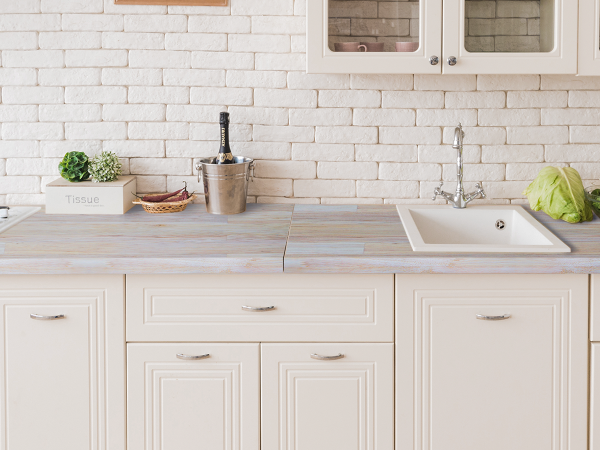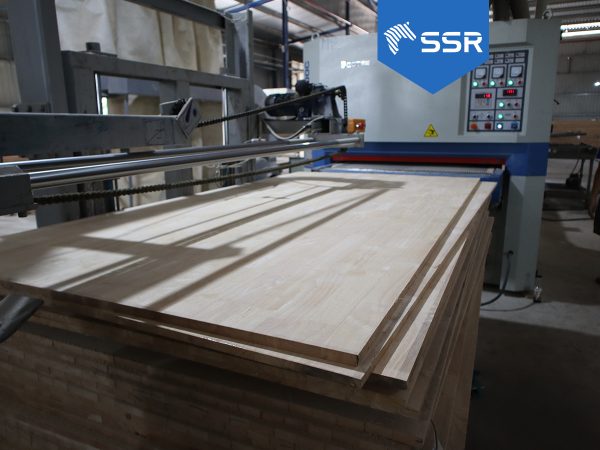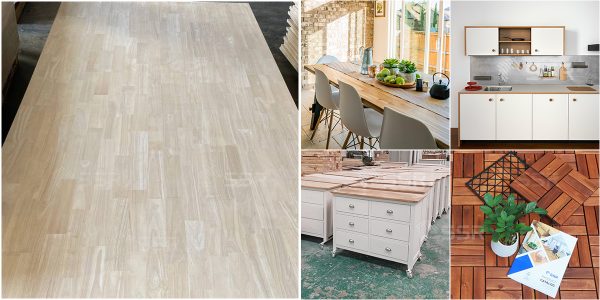1. Wenge wood – How to identify
At present, “wenge” is the name being used for two types of wood: Millettia laurentii and Senna siamea. In America, wenge refers to the type of wood with the scientific name: Millettia laurentii. The tree spreads across South Africa. It is listed in the IUCN Red List of Threatened Species. (IUCN: The International Union for Conservation of Nature.)
Millettia laurentii owns some prominent characteristics. The core of the wood is medium brown and red, sometimes with a reddish or yellowish hue, with nearly black streaks. Its grain is straight, with a very coarse texture. The wood has excellent strength, hardness and is also dark enough to be used as a substitute for ebony.
However, in the wood market, the name “wenge” is also known to refer to another type of wood with the scientific name senna siamea (syn. Cassia siamea). In America, it is called pheasant wood. It is found in many parts of South and Southeast Asia and is widely planted throughout the tropics.
Because The stripes of the wood have very wide parenchyma bands, its appearance is somewhat similar to Millettia laurentii. However, Senna siamea’s stripes tend to be lighter and have better contrast, especially once a finish has been applied.
In Vietnam, the wenge has the scientific name: Senna Siamea Lamk (syn. Cassia siamea), Murasaki Taceyasen, Kassod Tree, etc.
It is wood of the wood group 1, but it is not in the list of rare plants banned from exploitation.
In Vietnam, Senna siamea trees are found in large numbers in the Central Highland, Eastern South, North Central, North West.
It can be planted in all ecological zones of Vietnam. Senna siamea can grow on all soil types including coastal sandy soil, depending on the aim of planting.
For Example, depending on whether it is planted for timber supply or to become a protective forest, different spacings and densities are chosen.
2. Charateristics and application of the senna siamea tree in Vietnam.
Senna siamea is large-sized tree species, height up to 20-25m, diameter 50-60cm. Its stem is cylindrical, twisted. The bark is grey, with regular small and narrow cracks, sometimes segments are formed due to the stem twisting at some points.
Due to its high adaptability, Senna siamea is used for planting timber forests, protective forests, supportive trees in tea and coffee plantations, soil improvement, shade trees. Wood is used for furniture making or handicrafts.
SSR Vina is supplying wenge/ senna siamea wood products. If you are interested, let’s get to know the significant characteristics of its timber. What strengths and weaknesses does it have?
3. Wenge/Senna siamea wood Characteristics
- Wenge color
Sapwood and heartwood have different colors; sapwood is pale yellow, heartwood got yellowish-brown to blackish brown.
- Wenge texture
Woodgrain can be interlocked or wavy, with a coarse texture. Its pores are naturally filled with sap from the tree, this makes the surface smoother than other open-grained woods with large pores.
The wood is hard and heavy, the average mass of dry wood approximates 810kg/m3.
Volume shrinkage coefficient 0.62. Fibre saturation point 23%. Pressure strength along the grain 615kg/cm2, static bending strength 1520kg/cm2, splitting strength 20kg/cm. Collision bending 0.64. Senna siamea wood can be used for structures requiring high durability in construction, and transport.
Therefore, it is a very good type of timber, with grain straight and strong, suitable. It’s durable and weather-resistant. It’s less likely to warp or to get molded in usual conditions.
The wenge has been used in manufacturing lovely furniture for the house, thanks to the nice grain, the natural and appealing color of the wood. Besides, the combination of the boards with flexible methods to create the new boards such as live edge boards, full sheet boards are highly favored. This combination also takes maximum advantage of the material.
You can see details at the link: Wooden wenge (senna siamea) product
If you have any questions about wenge products, please contact the hotline for specific consultation on prices and long-term cooperation.
Related News
Pros and cons of rubberwood finger joint board for kitchen
Rubberwood finger joint board is considered a type of product which is a matching material for kitchen countertops. In fact, they are less costly than other materials such as natural stone (granite), engineered stone (quartz), or other textures with a solid surface. The above rubberwood panel would cost nearly (price), less expensive than a solid […]
How To Choose Quality Finger Jointed Boards Which Meet Your Needs
How to recognize quality finger jointed boards in a market that has many suppliers and its quality. How to recognize quality wooden boards in a market in which the suppliers have much various qualities. Each supplier will provide their customer with different standards. Therefore, let’s take a look at a standard of our product qualities, […]
Top International Wood Products Supplier in Vietnam
SSR VINA was established in 2009, based on the development of multinational production in the field of import and export. We gradually specialize in manufacturing and supplying high-quality wood board products to meet the best requirements for customers. Currently, we are International Wood Products Supplier in Vietnam. 1. A guide to development SSR has set […]















